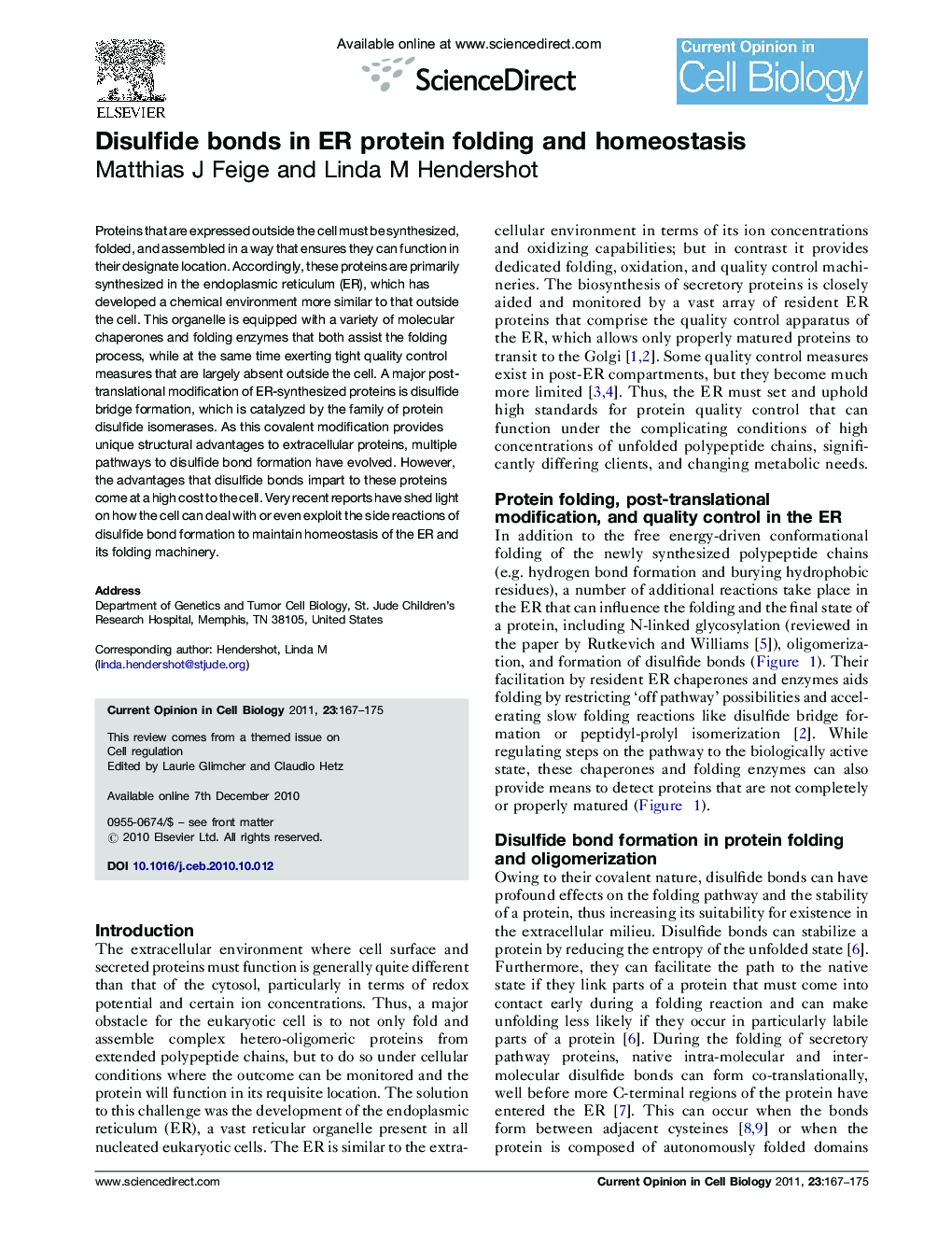| Article ID | Journal | Published Year | Pages | File Type |
|---|---|---|---|---|
| 10929275 | Current Opinion in Cell Biology | 2011 | 9 Pages |
Abstract
Proteins that are expressed outside the cell must be synthesized, folded, and assembled in a way that ensures they can function in their designate location. Accordingly, these proteins are primarily synthesized in the endoplasmic reticulum (ER), which has developed a chemical environment more similar to that outside the cell. This organelle is equipped with a variety of molecular chaperones and folding enzymes that both assist the folding process, while at the same time exerting tight quality control measures that are largely absent outside the cell. A major post-translational modification of ER-synthesized proteins is disulfide bridge formation, which is catalyzed by the family of protein disulfide isomerases. As this covalent modification provides unique structural advantages to extracellular proteins, multiple pathways to disulfide bond formation have evolved. However, the advantages that disulfide bonds impart to these proteins come at a high cost to the cell. Very recent reports have shed light on how the cell can deal with or even exploit the side reactions of disulfide bond formation to maintain homeostasis of the ER and its folding machinery.
Related Topics
Life Sciences
Biochemistry, Genetics and Molecular Biology
Cell Biology
Authors
Matthias J Feige, Linda M Hendershot,
